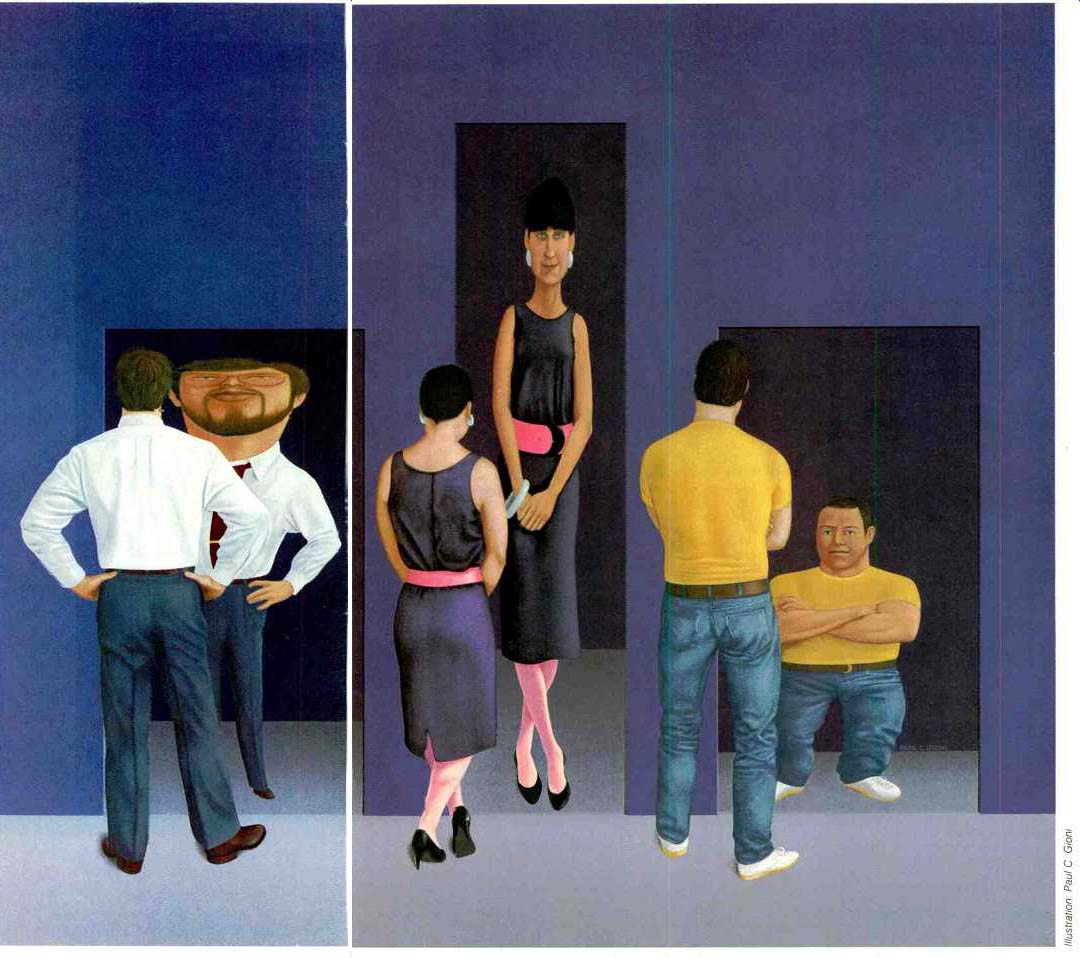
by Howard A. Roberson
Every person who has a tape recorder does some editing, and every cassette deck used by a serious recordist includes some form of noise reduction. Substantially all decks have Dolby B NR, and many of the current models have Dolby C NR as well. About 10% of the models listed in Audio's Annual Equipment Directory (October 1985) include dbx NR.
The probability is thus very high that an original recording and any edited copy made of it will have some form of noise reduction.
Because the frequency responses of the mastering, the rerecording and the final playback deck all contribute to the end result, it is important that response deviations be kept as small as possible, when they can be controlled. This is especially true when noise reduction is used. The material that follows provides guidelines on how to pinpoint what errors actually exist, determine their effects, and correct or compensate for them.
Real Frequency Response
For a long time, the only way to measure frequency response (more correctly, amplitude response versus frequency) was to set an oscillator to a number of separate frequencies, one by one, reading the output amplitudes on some sort of meter. The development of the VCO-based function generator led to the availability of sources that could be swept electronically from 20 Hz to 20 kHz. Because the better units had very stable amplitude over the entire frequency range, they were popular for evaluating all types of products. Relatively recent test instruments have introduced a noncontinuous type of sweeping: A stepping through many frequencies under the control of a microprocessor.
Unfortunately, for all the appeal and popularity of the current sweeping/ stepping sine-wave sources, they should not be used for evaluating the responses of tape recorders, especially if any form of noise reduction is used. The interrelationships among bias, spectral content of the signal, and self-demagnetization effects are such that the response at 10 kHz, for example, will vary with the amount of energy at lower frequencies.
Without noise reduction, these changes are not large, and the response errors are quite small. With noise reduction, however, other factors are introduced which cause much larger response deviations to appear in the process of evaluating single decks or an editing system. In past articles and "Equipment Profiles," I have commented that the dbx NR system must be tested with a broad-band signal, such as pink noise, so the dbx broad-band detector(s) can sense recording and playback levels properly and set the complementary encoder/ decoder gains correctly. Use of a sweeping or stepping signal would generate level variations related to the deck's frequency response errors.
These variations would be doubled by the decoder expansion, but the deviations resulting would not demonstrate a tracking error in the NR system--they would show the results of using the wrong test stimulus for the device under test. As the computer freaks say, GIGO (garbage in, garbage out).
Because the error that appeared with swept-sine testing of Dolby B NR was small, this system seemed to be immune to any similar sort of false response indication. With the introduction of Dolby C NR, there was-all of a sudden, it seemed-evidence of severe response and mistracking errors with the use of a swept/stepped sine-wave source. The new NR system seemed further damned when it evidenced mistracking at 10 to 15 dB below Dolby reference level (200 nWb/m), even though the response was quite good at -20 dB.
A review of the basic characteristics of both the Dolby B and C NR systems convinced me that a broad-band test Pt" signal was a must for accurate response testing of both versions. How ever, a serious question remained on the large deviations that appeared when Dolby C NR was tested with pink noise. Figure 1 shows playback responses of three decks, each playing a tape it didn't record. None of the results would be considered accept able. Was there some sort of measurement error? After rereading Ray Dolby's paper on the Dolby C NR system, I concluded that I should take a better look at the spectral characteristics of music.
Dr. Dolby's paper clearly stated that filtering was included to eliminate the problem of differences in high-frequency responses, but normal pink noise is not that close to music, spectrally. Figure 2 shows the range of maximum levels measured over a period of time in the 10 standard octave bands during a portion of an audiophile recording of "Night on Bald Mountain" by Mussorgsky. In this 'scope photo, take particular note of the fact that the highest levels in the upper frequencies roll off at about 5 dB/octave, from the 1-kHz band on up. The pattern shown is matched closely by most types of music, whether recorded or live.
There does exist, therefore, a very valid reason for shaping the pink-noise signal to make it more music-like. This will yield a more accurate indication of the actual mistracking between the Dolby sliding-band compressing en coder and expanding decoder in the real world of music and tape recorders. The first version of what I call "PN/Music" has a spectrum as shown n the bottom trace of Fig. 3. The roll-off was obtained with the combination of a 1 1/2-octave filter having a 14-dB cut centered on 19 kHz, and a low-pass cutoff filter at 20 kHz. For convenient display analysis, the playback from the deck was given a complementary boost (top trace) by trimming the filter's shape and position to get the flat total response shown in the center. The roll-off frequency chosen is somewhat higher than that of the music sampled in Fig. 2, which makes the test stimulus a bit more challenging than the music sample and closer to what some synthesizers might do. The energy in the 20-kHz band, however, is 15 dB below what it would be without the roll-off much closer to the actual relative levels in music.
Figure 4 shows the results of four test conditions with a high-quality, three-head deck. The top trace is the measured output with the monitor switch on "Source." The second trace is the record/playback response with Dolby C NR at-20 dB, with the pink noise extending to 50 kHz. It would be a mistake to regard what is shown as severe tracking error, for, as seen in the third trace, cutting the noise off at 25 kHz improved the response dramatically. There were relatively minor deviations in response over a range of levels from -25 dB to Dolby level. The bottom trace was secured using PN/Music. Its shape stayed exactly the same from the bottom-level noise limit to almost " + 10" on the deck's meters, showing that the tracking was actually outstanding-something that would have been obscured if a non-music-like test signal-had been used.
Record on One Deck, Play on Another
For the following investigation, a total of seven cassette decks were used.
For convenient reference, I assigned numbers to each: Nakamichi BX-300, #1; Revox 8215, #2; Akai GXR99, #3; Technics RS-B48R, #4; TEAC V-500X, #5; Aiwa AD-M700, #6; and Nakamichi 582, #7. This collection represented a wide range of price and performance. All of the decks have Dolby B NR, decks #1 to #5 have Dolby C NR as well, and decks #4 and #5 also have dbx NR. To designate recording on one deck with playback on another, I will use abbreviations; recording on deck #2 with playback on deck #4, for example, will be shown as "R2/P4." In general, tests were run using the NR systems built into the decks. To pin down the cause of some of the effects observed, I used two outboard processors, a Nakamichi NR-200 for Dolby NR tests and a dbx 224 for dbx checks.
The first task was to ascertain the record/playback responses without NR. Figure 5 shows the results with decks #1 to #5: The responses are all quite flat, but some differences exist.
Figure 6 shows what happens when recordings made on deck #1 are subsequently played on decks #1 to #5 (R1/P1 to R1/P5). Similar checks were made of R2/P1 to R2/P5, R3/P1 to R3/P5, and R4/P1 to R4/P5. Collectively, they told this story: Deck #1 showed a high-end boost when playing back tapes from other decks, particularly #2 and #3. Deck #2 played the tape from #1 quite flat, but showed a similar boost with the tape from #3 and a general high-end rise with the tape from #4. Deck #3 played tapes from #2 and #3 very flat, but had a slight droop with the tape from #1 and a roll-off with the tape from #4. Deck #4 showed a sharp roll-off at the high end with all tapes, and had a notice able droop with the tape from #1.
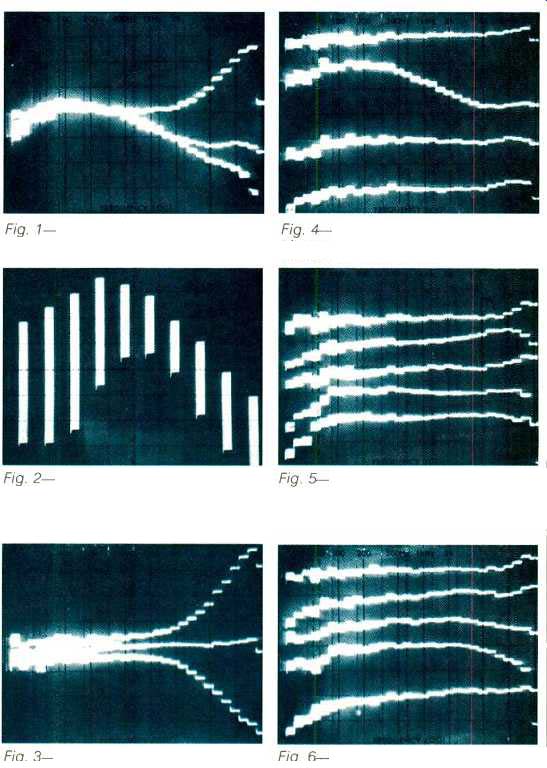
Fig.
1--Record/playback responses using pink noise with Dolby C NR. Deck #1
playback of tape made on deck #4 shows large high-end boost (top trace).
Deck #3 playback of a tape from deck #2 has large droop at high end (middle
trace). Deck #4 playback of a tape from deck #5 has even more droop, plus
roll-off (bottom trace). (Vertical scale for this and all other figures:
5 dB/div.)
Fig. 2--Range of octave-band maximum levels during a portion of a recording of Mussorgsky's "Night on Bald Mountain."
Fig. 3--Snaped pink-noise spectrum to make "PN/Music" (bottom trace), equalization added after tape recorder's playback to make flat RTA display with flat record/playback responses (top trace), and result without recorder in loop (middle trace).
Fig. 4--Four test conditions using a high-quality, three-head deck. From top to bottom: Monitor switch on "Source," record/playback response at-20 dB with pink noise from generator extending to 50 kHz, record/playback with 25-kHz low-pass filter on noise generator's output, and record/playback with PN/Music. All record/playback responses were made with Dolby C NP.
Fig. 5—Record/playback responses without NR for decks #1 through #5 (top to bottom); see text.
Fig. 6--Responses of tape recorded on deck #1 played back on decks #1 through #5 (top to bottom).
The differences described here are primarily from the various versions of playback equalization as actually used in the decks. The boosts and roll-offs are not from the very small discrepancies in azimuth alignment that existed during the tests. This is the first area of concern to be introduced: Even with out NR, the flatness of the playback can be affected by differences in play back equalization, and perhaps azimuth alignment, from one deck to another. With NR, these response deviations can be expanded by action of the decoder. To minimize such effects when editing tapes, careful deck selection can well be in order.
What Happens with Dolby B NR
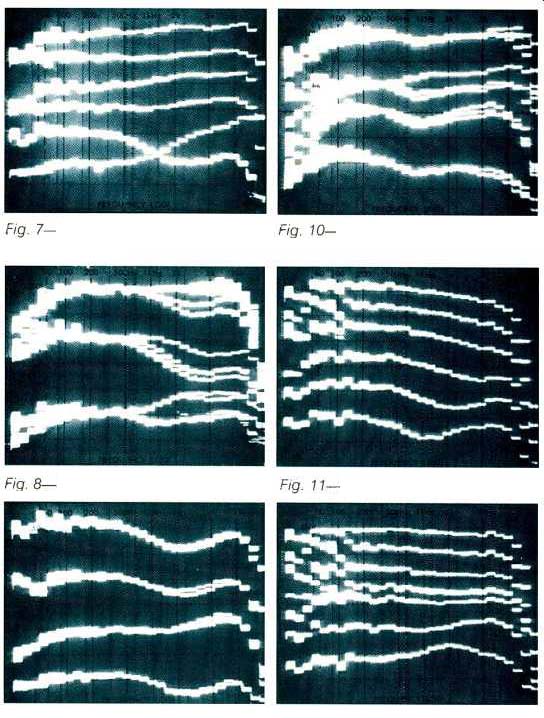
Fig. 7--Record/playback responses with decks #6 and #7. From top to bottom:
R6/P6 without NR, R7/P7 without NR, R6/P6 with Dolby B NR, R7/P7 with
Dolby B NR, R6/P7 with Dolby B NR showing a rising high end, and R7/P6
with Dolby B NR showing a high-end droop.
Fig. 8--Responses, from top to bottom, of R4/P3, P5, P6, and P7; R5/P3, P4, P6, and P7; R3/P4 to P7. See text.
Fig. 9--Effects of multiplex filter on Dolby NR mistracking. Each trace shows overlaid responses of tapes recorded on deck #7, with and without MPX filter, played back on decks #6, #4, #5, and #3 (top to bottom).
Fig. 10--Dolby B NR responses using Nakamichi NR-200 processor. From top to bottom: R3/P3 to R6/P6, overlaid; R3/P4 to P6; R4/P3, P5, and P6; R5/P3, P4, and P6.
Fig. 11--R7/P6 with Dolby B NR, using Nakamichi NR -200, from -25 to +5 dB.
Fig. 12--R7/P6 with Dolby B NR, using Nakamichi NR-200, from about -20 to +5 dB with +4 dB play calibration offset.
Figure 7 shows the results of inter changing tapes between decks #6 and #7. Both decks' record/play responses (R6/P6 and R7/P7) are very good, with or without Dolby B NR, but the R6/P7 and R7/P6 responses (with NR) are very poor. I should point out that all responses were measured with PN/Music, which would ensure the best test results. With deck #7, it was possible to adjust record sensitivity to match Dolby level, but that was not possible to do with deck #6. The latter also has a drooping playback response compared to deck #7. This does appear to be a bad combination for Dolby B NR recording on one deck and later playback on the other.
Figure 8 shows the results for sever al deck-to-deck crosses: A tape re corded on deck #4 played back on decks #3, #5, #6, and #7; a tape from deck #5 played back on decks #3, #4, #6, and #7; and a tape from deck #3 played back on deck #4 through deck #7. The tape from #4 worked well in decks #5 and #7, and the tape from #3 had just a slight saddle in the mid-highs when played on decks #4 and #6. The rest would be considered marginal or worse.
The tape from deck #7 was then played back on decks #3 to #6 (Fig. 9), after recording with and without the multiplex filter. The very minor differences demonstrate that use of the filter will not solve the problem.
The next tests used the Nakamichi NR-200 as the Dolby B NR processor for decks #3 to #6. This permitted setting up each deck to match the same NR unit, thus removing the question of Dolby NR differences from deck to deck. I must emphasize that this procedure does not eliminate all possible errors in making play- and record-level calibrations. They are minimized, but the two-head decks (#4 and #5) and the 1-dB meter steps of the NR-200 made exact level matching among decks close to impossible.
The topmost trace of Fig. 10 shows the overlaid record/playback responses of decks #3 to #6. There is some spreading at the low end and differences at the high end, but they are quite close in general. The other traces, from top to bottom, show results for R3/P4 to P6; R4/P3, P5, and P6; and R5/P3, P4, and P6. These results are better than those in Fig. 8, where the individual decks' NR systems were used, but the responses are disappointing in showing that effects remained from level and/or response differences.
I mentioned earlier that I could not be certain how well I had matched calibration levels, even when using the NR-200 as the common NR system.
Figure 11 shows the Dolby B NR responses for R7/P6 over a range of levels from about - 25 to +5 dB. Mis tracking is certainly in evidence, and there is a general roll-off across a good part of the band at all levels. I then adjusted " Play Cal" on the NR-200 to make the -20 dB response of R7/P6 look the flattest, and reran the range-of-levels test. Figure 12 demonstrates the great improvement in responses over the entire level range with the " Play Cal" offset. A separate check showed that I had increased the play level by +4 dB. I had not expected that this adjustment would be so effective. In addition, I was surprised at the large adjustment needed to compensate for both calibration errors and response effects on overall level to make deck #6 track properly when playing tapes made on deck #7.
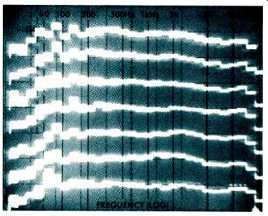
Fig. 13--Effects of decoding and re-encoding using Dolby B NR. Traces are of
R7/P7 feeding R6/P6 at levels from -25 to +5 dB. See text.
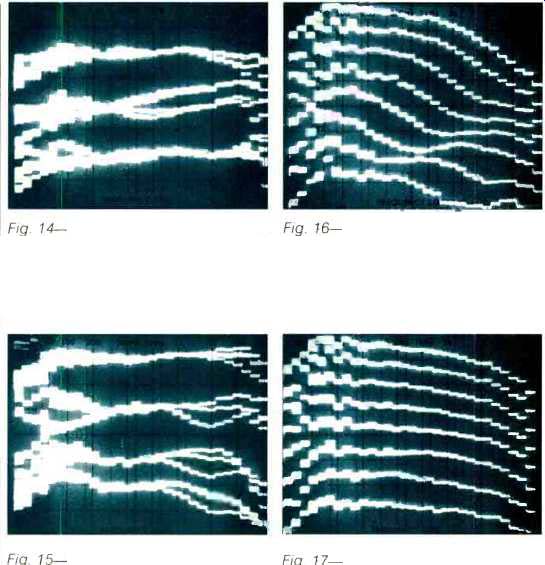
Fig. 14--Overall record/playback responses using each deck's Dolby C NR
circuits. From top to bottom: R1/P2 to P5; R2/P1, P3, P4, and P5; R3/P1,
P2, P4, and P5.
Fig. 15--Record/playback responses with Dolby C NR using Nakamichi NR-200 processor. From top to bottom: R3/P3 to R6/P6, overlaid; R3/P4 to P6; R4/P3, P5, and P6; R5/P3, P4, and P6.
Fig. 16--R5/P6 with Dolby C NR, using Nakamichi NR-200, from- 30 to +5 dB.
Fig. 17--Same as Fig. 16 but with play calibration offset +5 dB.
All of the above has been predicated on the condition that the ultimate play back deck is not available for the editing and on the assumption that there is no advantage in decoding a Dolby B NR tape just to encode it again in making a copy. In other words, we should copy the Dolby B NR tape with NR out-or should we? It seems to make sense to avoid decoding and re-encoding, but the previous tests have shown many poor results from doing just that. Figure 13 shows the result of R7/P7 as the source for R6/P6, all with Dolby B NR. With this combination, P7 was decoded and R6 was re-encoded; final decoding was done with P6. The range in levels is from -25 to +5 dB, with excellent tracking in all respects.
A comparison with Fig. 7 demonstrates the great improvement gained by doing what seemed unnecessary.
If at all possible, you should make your edited copy on the ultimate play back deck with NR switched in for both decks. Even if the final-play deck is not available to you, follow the same plan, using NR on both decks involved in making the copy. If you are using a double-well editing deck, make certain you know what you can and can't do as far as NR is concerned. The probability is that you will not be able to decode the tape you're playing and re-encode the copy being made, which would be preferable. You may have no choice but to copy the tape in its encoded form, in which case you can try different tape formulations to see which gives the best final result. It would probably also help to match re cording levels so that copies of Dolby-level tones would also be at Dolby level; this may take some experimenting.
To summarize what has been shown: Because of differences in calibration levels and recorder responses, both playback and record/playback, there is likely to be some Dolby B NR mistracking when a tape made on one recorder is played back on another.
The best plan when making an edited copy is to decode the original on the playing deck and re-encode it on the recording deck. It is possible to make considerable improvements in the playback of a Dolby B NR tape recorded on another deck by using an out board processor and adjusting the play calibration level. An increase in this level will bring up the drooping mids and highs; a decrease will pull down a high-end exaggeration or re duce extra presence. This will be discussed further, after a look at Dolby C and dbx NR.
And Then Came Dolby C NR
Considering some of the poor results I've obtained from testing in months past, I was really interested to see how Dolby C NR would perform using PN/Music. Figure 14 shows R1/P2 to P5; R2/P1, P3, P4, and P5; and R3/P1, P2, P4, and P5. The majority of these responses are really quite good, with the exceptions of R1/P4, which had a sharp roll-off, and R2/P1 and P5, which showed elevated mids and highs.
Next, the NR-200 was inserted, with Dolby C NR selected, to replace the NR systems for decks #3 to #6. The record/play responses of each deck were quite good (Fig. 15, top trace), but the playbacks on other decks were not to be applauded.
To get a better feel for what was happening, I used a range of levels from-30 to +5 dB for R5/P6 using the NR-200. Figure 16 displays obvious mistracking and also a severe roll-off at the high end. I went back to " Play Cal" and increased the play level by 5 dB. There was still a general roll-off with increasing frequency (Fig. 17), but the response shape was very consistent over the range of levels. Fairly simple equalization, even a little treble from a tone control, would bring the response to within ±1 or ±2 dB over most of the audio band. Further comments on level calibration, responses, and tracking will be made later.
Figure 18 demonstrates the improvement possible with Dolby C NR if there is decoding with the play deck and re-encoding with the editing deck.
The combination used was R4/P4 with that playback feeding R3/P3, over a range from -25 to +5 dB. Compare the flatness of these results with the third set of traces in Fig. 15, where the same combination of recorders had a boost at 5 kHz and a severe roll-off above that when there was no decoding and subsequent re-encoding be tween recorders.
The above results illustrate that with Dolby C NR, as with Dolby B NR, the final playback will most likely have the best response if the copy is made on the ultimate play deck. Level calibration adjustments with Dolby C NR also showed beneficial corrections of response deviations from mistracking.
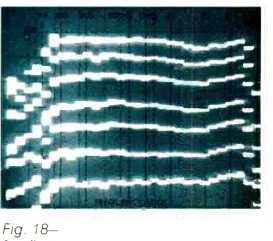
Fig. 18--R4/P4 with that playback feeding R3/P3, with both decks using Dolby
C NR, over a range from-25 to +5 dB.
Editing with dbx NR
Although most decks do not have dbx NR, a fair percentage of audiophiles who have more than one deck probably have that capability, and some prefer to use it when editing.
Also, among people who have small studios or who are involved in multi-tracking for other reasons, dbx is the NR system in widest use, especially if TEAC equipment is employed.
Figure 19 shows R6/P6 using the dbx 224 processor over a range of levels from -25 to +5 dB. It is obvious that the response droops somewhat at the high end, but there is no change in response shape over the entire range.
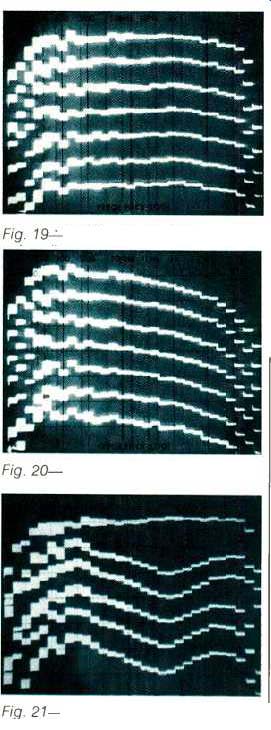
Fig. 19--R6/P6 with dbx NR, using dbx 224 processor, from- 25 to +5 dB.
Fig. 20--Same as Fig. 19 but for R5/P6.
Fig. 21--From top to bottom: R6/P6 using dbx 224, R6/P6 with non-flat equalization before the dbx encoder, R7/P7 with P6 as the input, P7 back to R6/P6, P6 back to R7/P7, and then P7 back to R6/P6 again, making a fifth-generation copy.
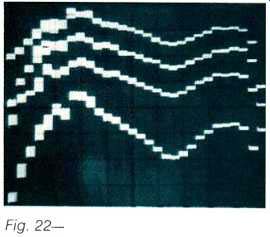
Fig. 22--Buildup of recorder response errors. From top to bottom: Test signal
with same equalization as in Fig. 21, R6/P6 with this equalization inserted
after the dbx 224 encoder and before the deck's input to simulate recorder
response errors, R7/P7 without further equalization and using P6 as the source,
and R6/P6 with additional equalization between encoder output and deck input
using P7 as the source.
A slight reduction in bias or a small boost with external equalization would make all of these responses very flat.
Figure 20 covers the same range of levels but for R5/P6, also using the dbx 224 processor. The response shapes are very consistent, but the roll-off from the low to the high end is too large to be acceptable. It is true, however, that external equalization would gain a flat response at all levels.
Other checks showed that the dbx system of deck #5 tracked the 224 within ± 1 dB across the band over the entire range of levels-in fact, it was usually within ±0.5 dB. The dbx circuits of deck #4, a less expensive unit, did not match the 224 as closely, but all points at all levels stayed within-± 1.5 dB. The fundamental cause of the falling responses in Fig. 20 was the lower playback equalization of deck #6 compared to deck #5. This demonstrates the importance of flat recorder responses with the same playback equalization for best results when moving tapes from one deck to another.
I would like to emphasize that the dbx system does not multiply frequency response deviations in what is being recorded. Figure 21 provides proof of this assertion. At the top is R6/P6 using the 224 processor. Next is R6/P6 with equalization inserted before the encoder; in other words, a non-flat response was recorded. The third trace shows R7/P7 with the playback output from deck #6 as the input. In the fourth trace, deck #7's playback is the input for R6/P6 again, which goes to R7/P7 again (fifth trace), and finally to R6/P6 (bottom trace). The external equalizer, of course, was used only for the initial recording. There are some slight changes in the responses, but the fifth-generation playback using dbx NR was very close to the first playback, and careful examination is required to find any differences.
Deviations in the response of the recorder, however, do cause errors. The deviations are multiplied in rerecording, such as when bouncing tracks, but they are not multiplied by dbx NR.
This is shown in Fig. 22. The topmost trace is of the test signal, with the same equalization as used in Fig. 21. The second trace is of R6/P6; the equalization was applied after the dbx 224 en coder-hat is, within the encode/decode loop. Note that this signal is, nevertheless, still very similar to the top most response. The third trace is R7/P7, with the second trace (decoded output of P6) as the input signal; no NR or equalization was inserted. Up to this point, the playback looks like the original input, with the addition of the decks' response variations.
In the bottom trace, deck #7's out put (the third trace) was rerecorded on deck #6 with dbx NR, and the equalization was inserted once again be tween the encoder and the input of the deck. As the trace shows, the deviations are double those in the response itself-but this is due to the double use of the equalization. The purpose of the equalization was to simulate a recorder having poor response; the dbx NR has added nothing further to the deviation. When Dolby NR is used, however, response discrepancies could cause some mistracking due to overall level shifts.
The point here is that flat recorder response is even more important in multi-tracking with repeated playbacks and rerecording, where response errors will build up. This is true with or without NR.
Guidelines for Good Editing
Considering the chamber of horrors presented above, the recordist could be quite convinced that avoiding any form of NR is the best course. In fact, if a high signal/noise ratio is not needed, such as with a fair amount of rock mu sic that exhibits considerable compression, editing without NR (except as needed to decode an encoded original) will ensure that there cannot be any response-error multiplication in playback. I suggest marking any tapes recorded without NR to make it clear that NR should not be used in play back.
In your general approach to making recordings, especially originals, make certain that all heads are aligned accurately. Select recording tape that gives the flattest response at-15 to- 20 dB both with and without NR, and trim bias, if possible, for the best overall flatness. If you do not have test equipment, rely on listening tests. Checking the "before" and "after" sound quality using FM interstation noise is a good method if you don't have a pink-noise generator. Very few decks these days have record-sensitivity adjustments; consider yourself fortunate if your deck has that facility, either manual or automatic. Matching record sensitivity is essential for getting good Dolby NR responses, but the matching is not important with dbx NR.
Some manufacturers state which specific tape formulation was used to set up a particular deck, and that is usually a reliable choice for making an original recording. If a long list of tapes is given in the manual, the information is virtually worthless unless the deck has automatic calibration. One way to select a tape for correct record sensitivity is to record a tone of 400 Hz or so at zero level on the meters, rewind the tape, and check the meter levels in playback. Many decks are set up quite well, and there is a good chance that the tape which shows the same level in record and in playback is the one with the correct sensitivity. This test cannot be run with a noise source at a high level because saturation effects at the high frequencies will cause level discrepancies to appear in playback.
The requirements for the editing deck are the same as for the original/ playback deck: Aligned heads, adjustment of bias for the best response, and record sensitivity to match the tape used. Tape selection, of course, can secure excellent bias and sensitivity matching in quite a few cases. If your source is not another tape, then the deck you are recording on is the original as far as taping is concerned. In any event, the recordist is faced with the challenge of making a tape that will perform well on another deck, without that deck being available for checking such things as head alignment or Dolby play-level calibration. And this says nothing about the playback response of that deck.
If the deck that will ultimately be used for playback is available, record your final, edited tape on it. If your source is another tape deck, it should be set for whatever NR decoding is appropriate to the original tape. The signal should be re-encoded by the deck you are recording on, even if the same NR system is used. As the tests described above have emphasized, flat responses are a must for all en code/decode NR systems, and level calibration is a further requirement for the two Dolby NR systems. If the deck used for final playback is not available and it is a premium deck of recent vintage, the editing deck should be similar, primarily to match the playback equalization. If the final-use deck is of medium quality, it is less significant what the editing deck is. If the quality of the final-play deck is unknown, or you will be editing for decks with different requirements, consider acquiring a deck of recent vintage and of medium to medium-high cost.
If you must make copies of tapes that are already NR-encoded, I recommend that you get a separate processor (or two) with record and playback level adjustments-useful with dbx and close to essential with Dolby NR for the best results. Purchasing a Dolby-level calibration tape will be necessary to get the most out of the processor, and that's a good thing to do even if you just want to check the play/meter calibration of your decks.
If the tapes to be edited have Dolby NR, consider the possibility that you may improve the overall sound by changing play calibration to get better flatness and tracking. If possible, have the person who supplied the original tape put a bit of pink noise on one end of it. The noise should be limited to 20 kHz and recorded at-20 dB, using the same NR as the rest of the tape. By ear or--even better--with an RTA, you will be able to use the processor's play calibration to flatten the response and then equalize it to make it really flat.
Verify your choices by listening to the recorded material: Raise the play calibration level to get rid of dullness and to fill in the middle, and reduce the play calibration level to bring down exaggerated highs and excessive presence. If everything sounds fine, don't change anything.
It may be helpful to remember this fact: With a single recording and sub sequent playback on any other deck, none of the NR systems discussed here will generate uncorrectable response errors-at least if level (for Dolby NR) and equalization adjustments can be made between the processor and the deck(s). For example, if record sensitivity is too high with Dolby NR on the recording deck, it can be compensated for by lowering the play calibration level of the processor fed by the playback deck.
Nakamichi and Tandberg decks include sharp cut-off filters above 25 kHz to help remove the possibility that above-band energy will cause Dolby NR tracking problems. With other decks, the user might want to add a low-pass filter if there's any doubt, such as when recording a synthesizer.
Because the multiplex filter's response rises between 19 and 38 kHz, it might not prove to be effective enough for this purpose.
Summary
With all of the decks under your control, try to have record and playback heads accurately aligned. Accurate tape-to-deck matching is essential to make the responses as flat as possible for both Dolby and dbx NR and to get the right record sensitivity for good Dolby NR tracking. When copying a tape with NR, decode it on the playing deck and then re-encode it on the editing deck for the best overall results.
Remember that differences in play back equalization can have a notice able effect on the response in final playback. Flat record/playback responses are especially important when rerecording a number of times. Be wary of possible measurement errors if you make your own tests. And finally, good luck and good listening!
(adapted from Audio magazine, Aug. 1986)
Also see:
EQ & NR: Striking A Balance (Aug. 1988)
= = = =